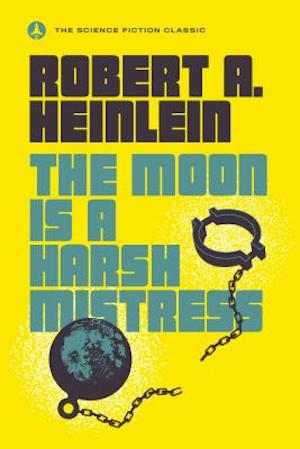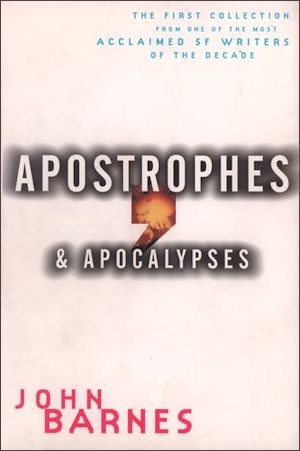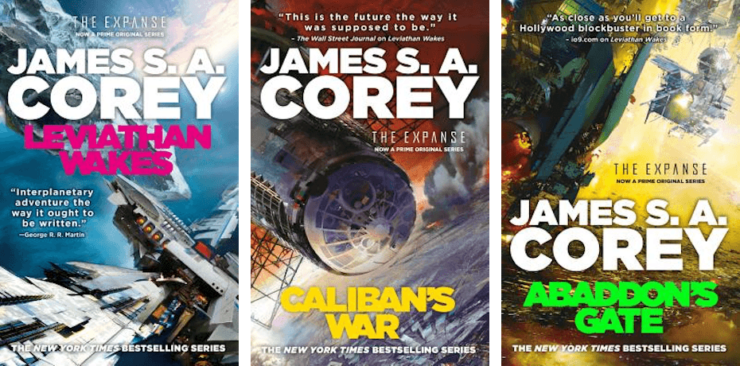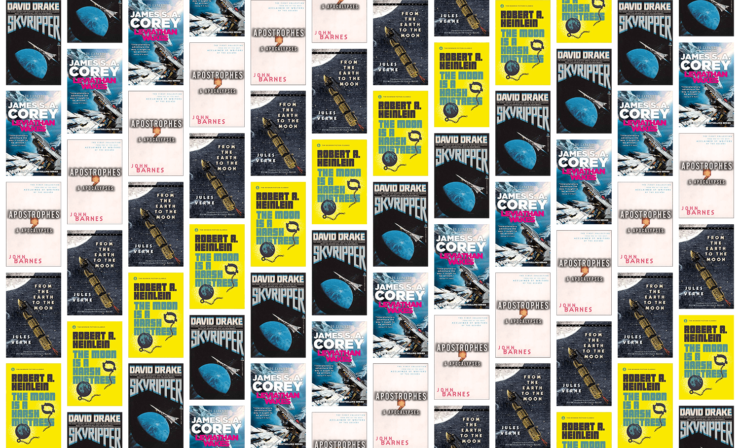I’ve noticed that Twitter is regularly aflame with heated debates about the SF cannon, and what and what is not contained within it. While I have not taken the time to follow these discussions in depth (or indeed at all), I confess to be puzzled by my skimming of the first few words of the tweets. Surely, cannons being such a well-established feature of terrestrial warfare, such weapons of war should be well represented within science fiction? Indeed, this is the case, as the following works demonstrate…
From the Earth to the Moon: A Direct Route in 97 Hours, 20 Minutes (French: De la Terre à la Lune, trajet direct en 97 heures 20 minutes) by Jules Verne (1865)

A very early example of the sub-genre. The vast Columbiad cannon described in Verne’s novel is the result of a project undertaken by the Baltimore Gun Club to launch a projectile at the Moon. In the absence of the rocket technology of a century later, it was only natural that the club should invest in something familiar: an artillery piece, but of unusual size.
Verne does his best to convince readers that the effort is, if not plausible, then still something a collection of colourful firearm enthusiasts might believe was plausible. Only a cur would point out that the accelerations involved should reduce any passengers to a thin, sticky film before they exited the gun barrel.
The Moon Is a Harsh Mistress by Robert A. Heinlein (1966)

The space cannon that drives much of the novel’s plot is actually repurposed transportation infrastructure. Having established prisoner-staffed farms on the Moon, the Authority needs some means to deliver cargo cheaply and reliably to Earth. Thanks to the airless Moon’s low escape velocity, the answer is a magnetic accelerator, able to throw cargos just hard enough to escape lunar gravity but softly enough to be captured by the Earth’s. The prisoners, tired of servitude and convinced that Authority policies will bring famine, simply replace wheat with rocks and let orbital velocities and Ek = ½ MV2 deliver tactical-nuke-grade rebukes to the Earth.
Sad to say, Heinlein provides too many details—always a temptation with this sort of thing—allowing readers with copies of The Effects of Nuclear Weapons to calculate the height of the impact waves generated by these rocks (a couple of inches) and to figure out how many impacts it would take to reduce Cheyenne Mountain to a memory (hundreds of thousands). Most readers apparently don’t own Effects and were convinced by Heinlein, which led to a long SFnal tradition of writing about terrifying orbital kinetic weapons.
Skyripper by David Drake

Conveniently for the United States of America, while Professor Vlasov developed his innovative method of transforming H-bomb output into directed particle beams while working for the Soviets, the professor is a crank. Convinced aliens are going to invade, equally convinced that the Soviets cannot turn his concept into reality fast enough to save Earth, he will provide the Americans with his ideas (if an American agent can deliver him alive to the US).
More conventional cannons enter into the professor’s plans in an unconventional way. The US’s rocket resources would not be sufficient to deliver the professor’s gadgets to orbit in quantities large enough to save Earth. The professor’s suggestion?
These are small packages, I tell you. Shoot them into orbit. Twenty years ago, you and the Canadians were doing this, two battleship cannon end to end…. How could the aliens invade when the Earth is ready to fire scores of new defensive satellites into orbit in a few hours?
“Under the Covenant Stars” by John Barnes (1988)

The United States and the Soviet Union having invested eye-watering sums in nuclear arms, it was only logical that they would one day use them on each other. Once the decision to attack had been made, subsequent human history would have consisted of a lot of screaming, followed by a long, loud silence. A perfect plan, except for those pesky Canadians…
Curiously unwilling to be collateral damage in US/Soviet apocalypse, Canada secretly deployed twenty large nuclear devices at the bottom of upward-facing shafts filled with debris. Detonation filled low Earth orbit with debris. Missiles could no longer get through, while bombers took long enough for governments to have second thoughts. Canada had saved the world—an act for which it would be comprehensively punished.
The Expanse (series) by James S. A. Corey (2011–2022)

Corey’s recently completed series provides its fleets of warships with suitable SFnal weapons, ranging from fusion-powered missiles to weaponized alien technology. All very thematically appropriate for an epic kicked off when sociopaths decide that alien relics, reverse engineered and deployed, are just what the Solar System needs.
Conventional projectile-firing cannon do play a role in this series, in the form of computer-controlled point defense cannons. Hitting an evasive target like an incoming missile is nearly impossible with a single shot. The PDCs address this with thousands of rounds a minute, only one of which needs to get lucky to save their ship. Moreover, the PDCs are quite useful for smaller, closer targets.
***
These five works of cannon SF came readily to mind, suggesting there are far more out there for me to find (in the event that I ever decide to stop doomscrolling Twitter). No doubt you cherish some favourite examples of cannon SF. Comments are, as ever, below.
In the words of fanfiction author Musty181, prolific book reviewer and perennial Darwin Award nominee James Davis Nicoll “looks like a default mii with glasses.” His work has appeared in Publishers Weekly and Romantic Times as well as on his own websites, James Nicoll Reviews (where he is assisted by editor Karen Lofstrom and web person Adrienne L. Travis) and the 2021 and 2022 Aurora Award finalist Young People Read Old SFF (where he is assisted by web person Adrienne L. Travis). He is a four-time finalist for the Best Fan Writer Hugo Award, and is surprisingly flammable.










